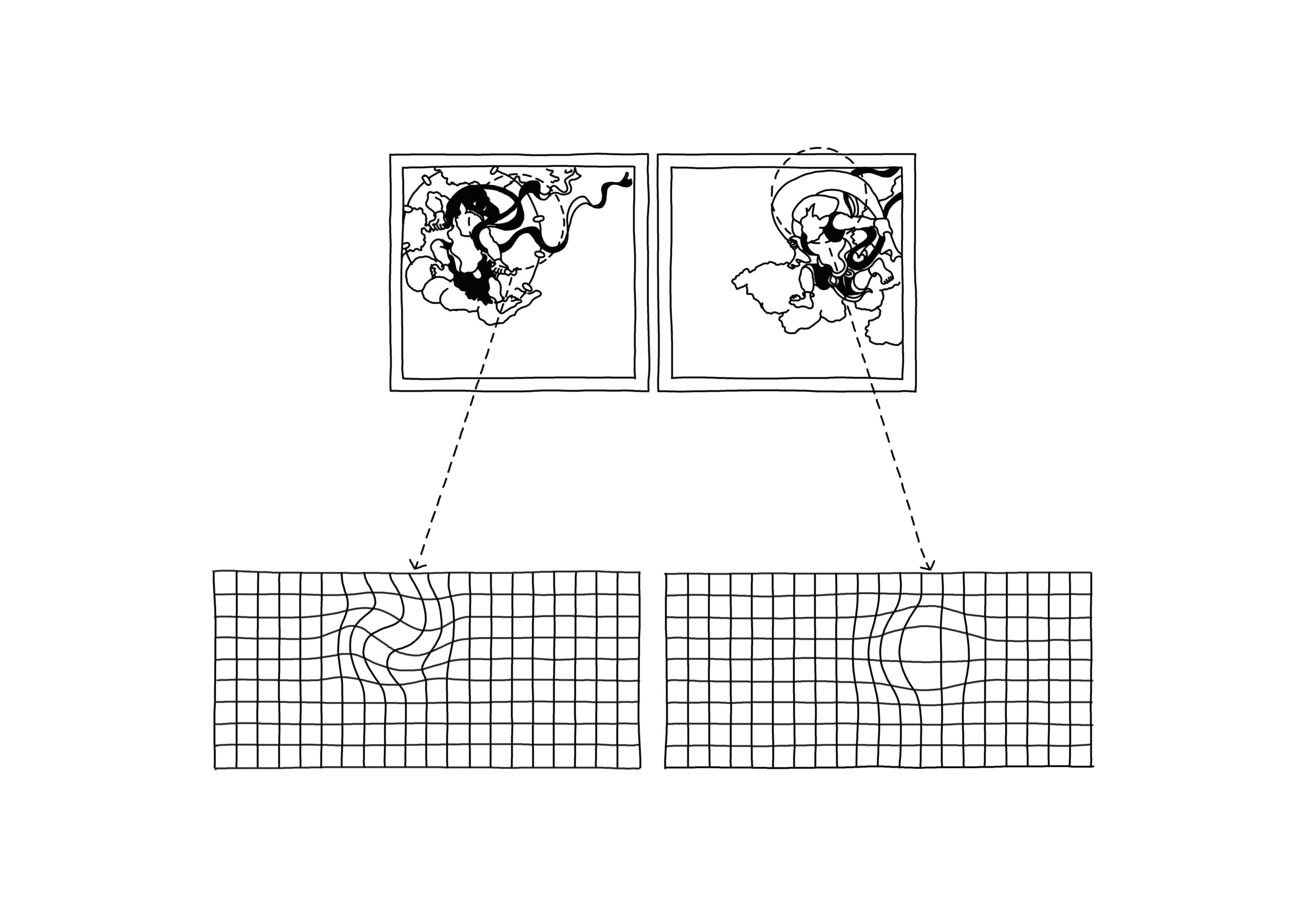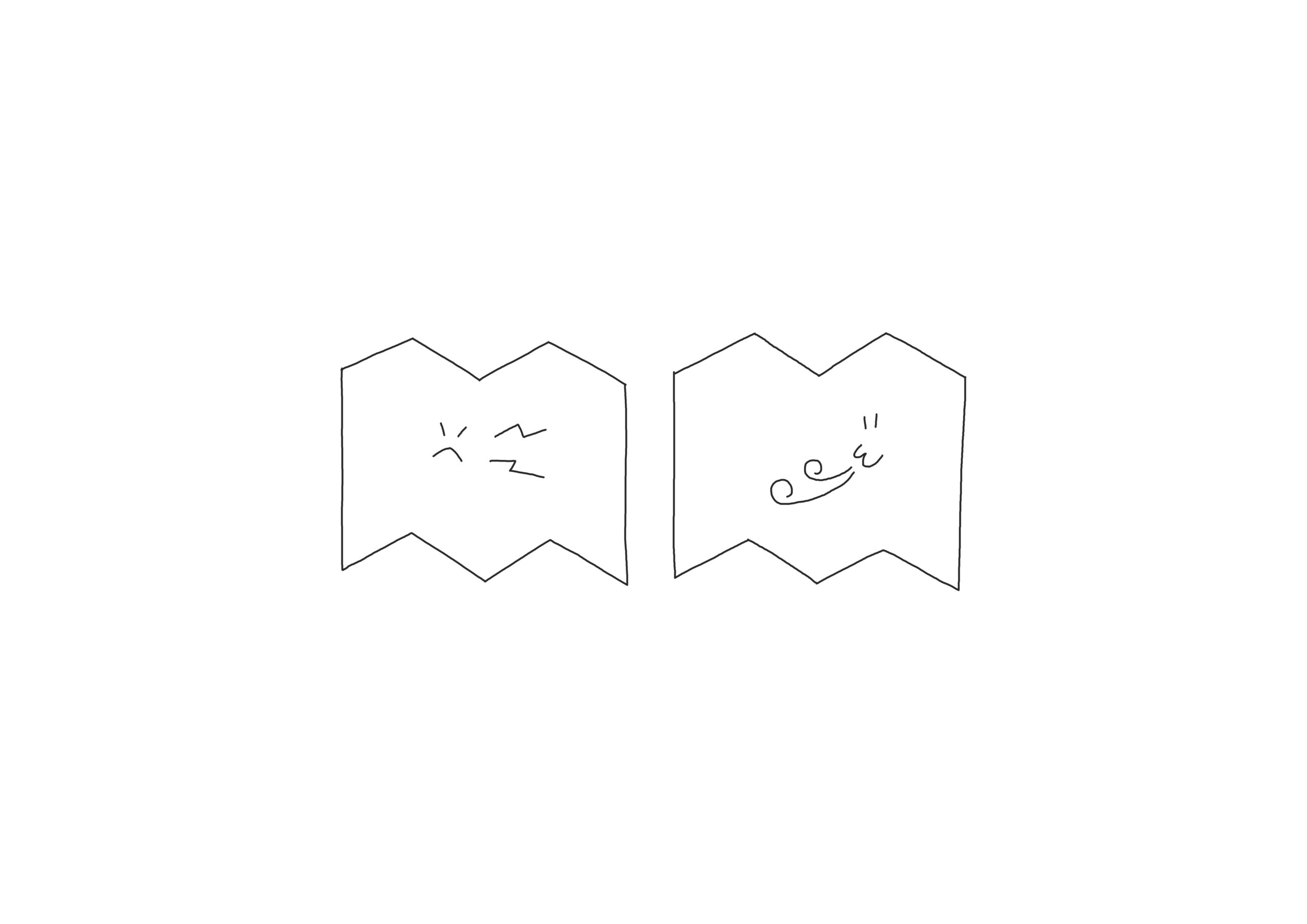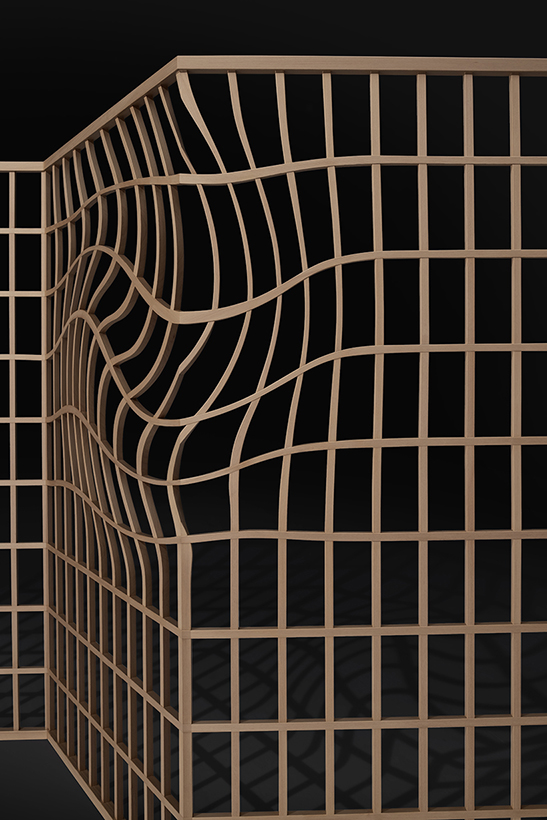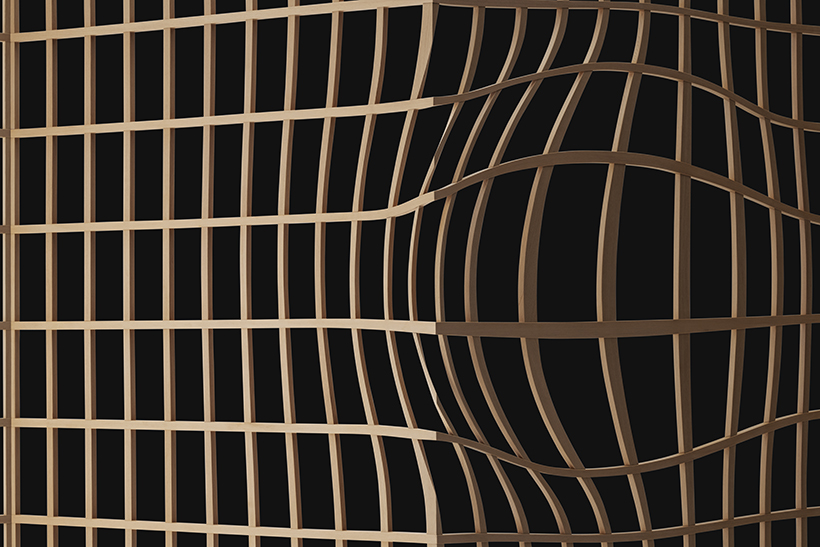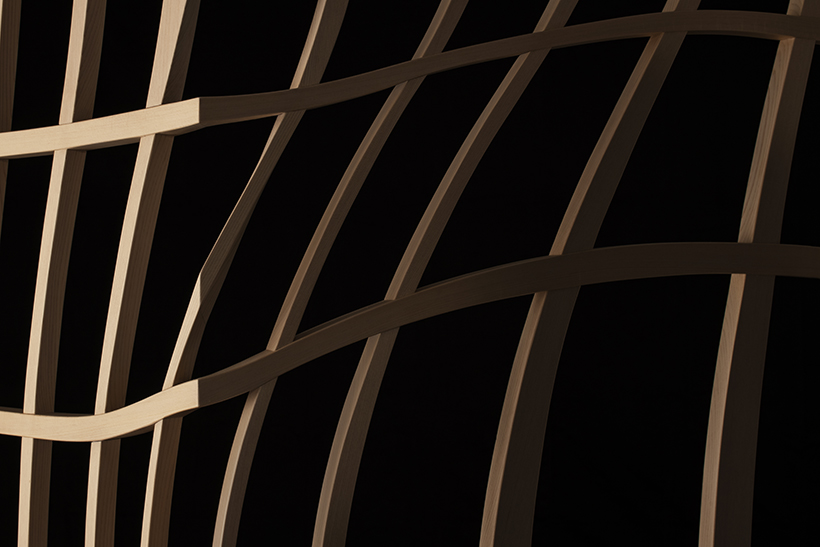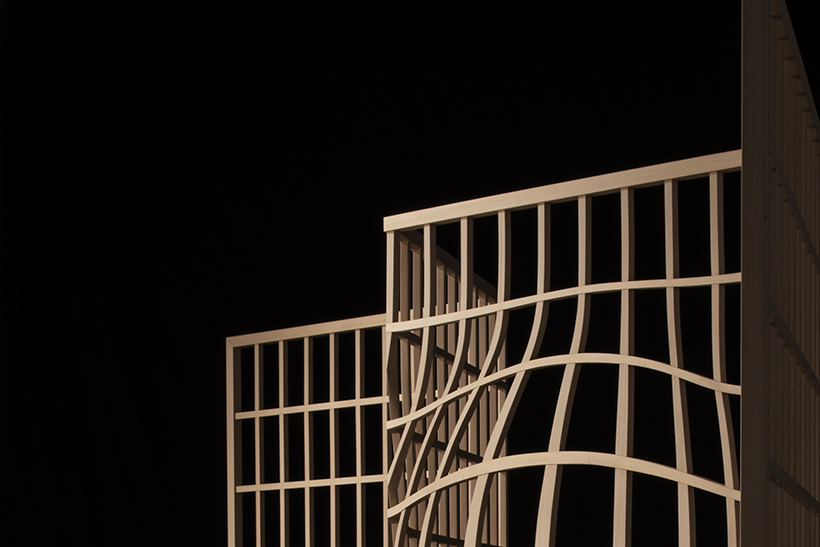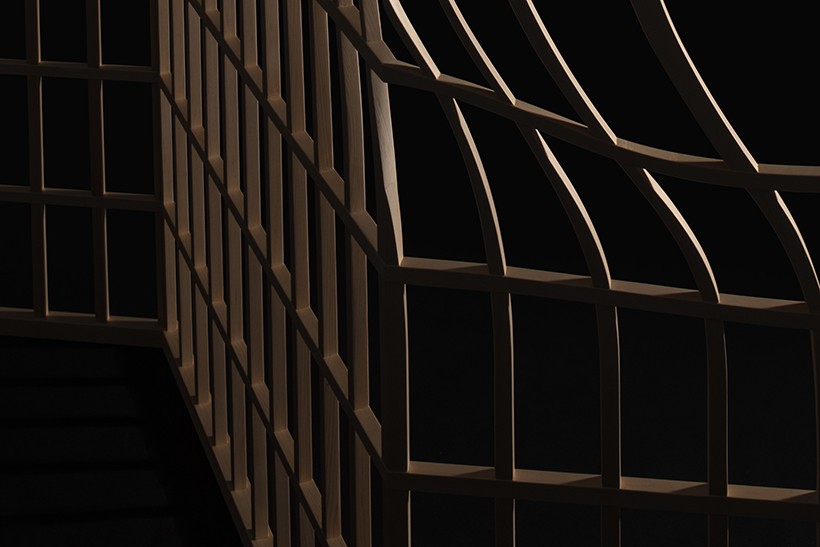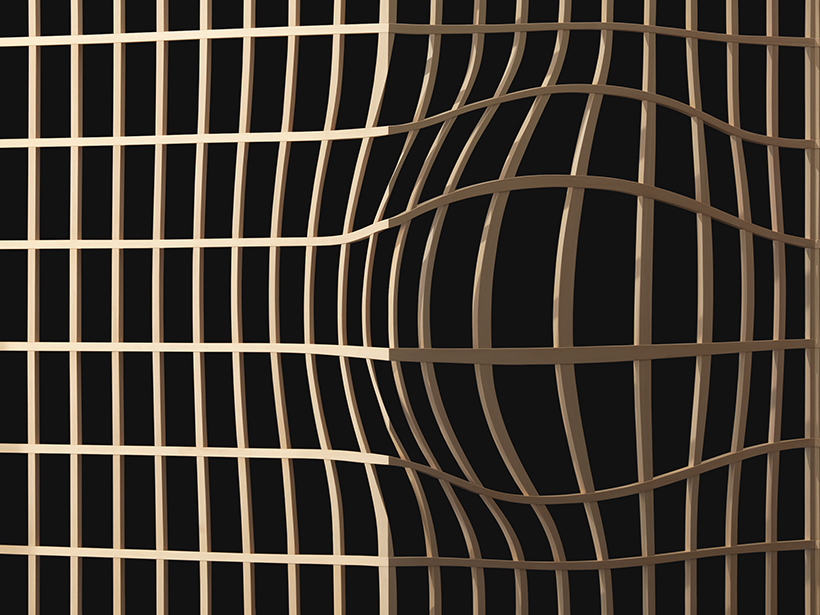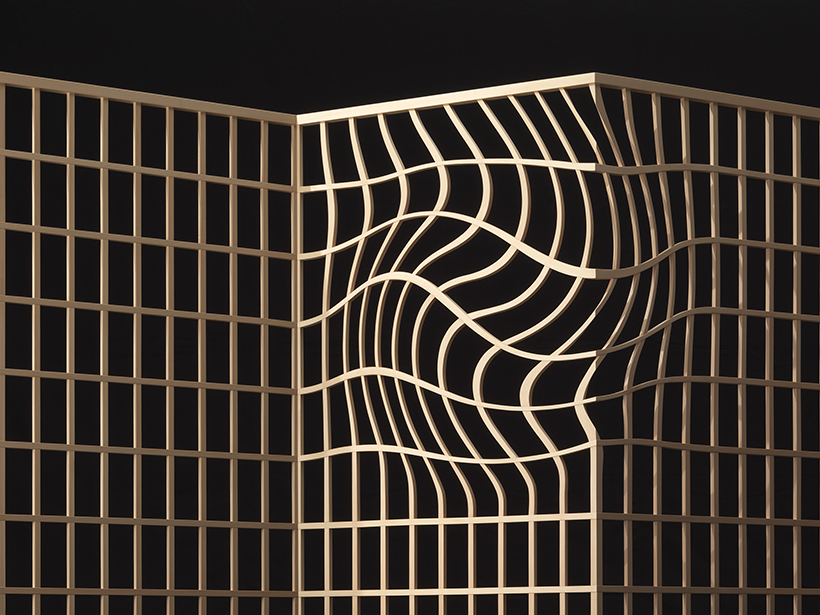fuu-raijin
Sashimono is a traditional Japanese joinery technique that assembles wood pieces without the use of glue or joinery tools. Within such a discipline, Kyo-Sashimono (Kyo=Kyoto-originated) specifically came about from the Heian aristocracy’s culture of daily life and was developed alongside the establishment of the tea ceremony culture. Founded in Kyoto in 1856, Miyazaki Furniture continues to manufacture by hand paulownia drawer chests, tatami chairs, and other such Japanese furniture in the Kyo-Sashimono tradition. The Kyo-Sashimono technique was applied to a wooden lattice to create the ‘ Wind God and Thunder God’ folding screen.
Depicting the wind god, Fujin, stirring wind and rain from the windbag on the right, and the thunder god, Raijin, beating a drum to produce rolling thunder and lightning on the left, ‘ Wind God and Thunder God’ was famously painted by Sotatsu Tawaraya in the seventeenth century on a folding screen.
The screen remains in the temple Kenninji’s collection in Kyoto and was later recreated by other painters like Korin Ogata. The design focuses on Fujin’s wind-filled cloth and Raijin’s twisting pose, and the thin, fluttering garment called tenne. To bring what is typically depicted in two dimensions into a third, it was imperative to collaborate with a wood engraver and a Sashimono joiner.
Hinoki (Japanese Cypress) was used, and assembling the twisted members was an arduous task, as was ensuring the pieces would not distort or warp. The final touch, the glass coating, creates a matte finish that brings out the wood grain.
